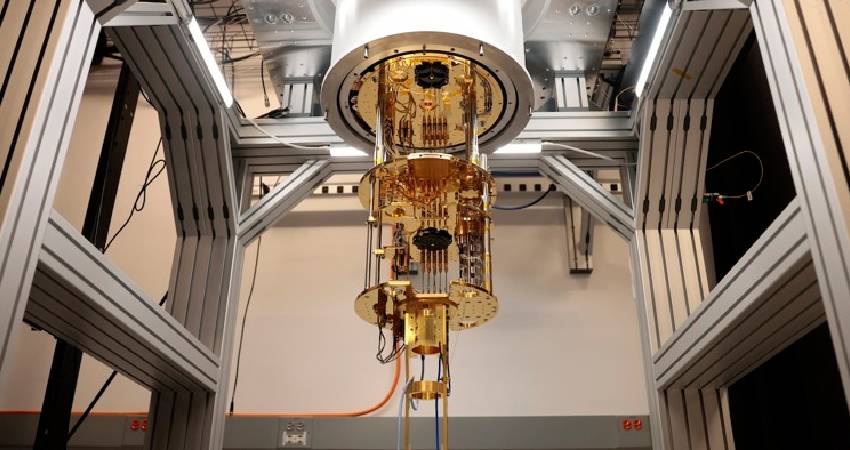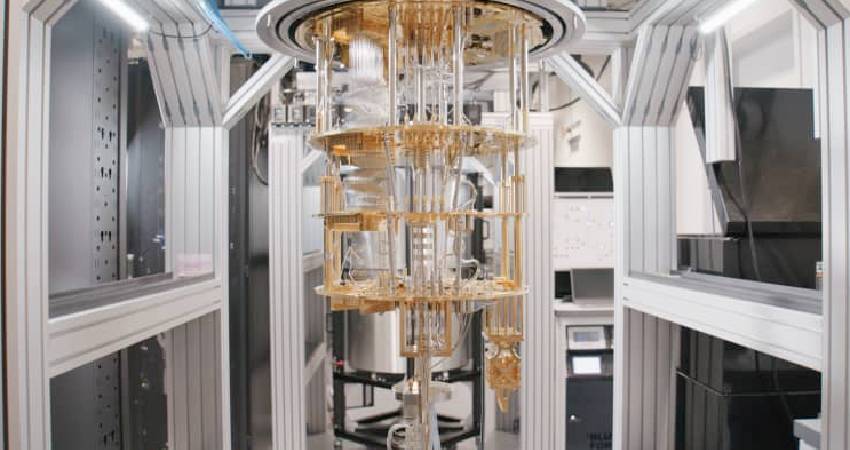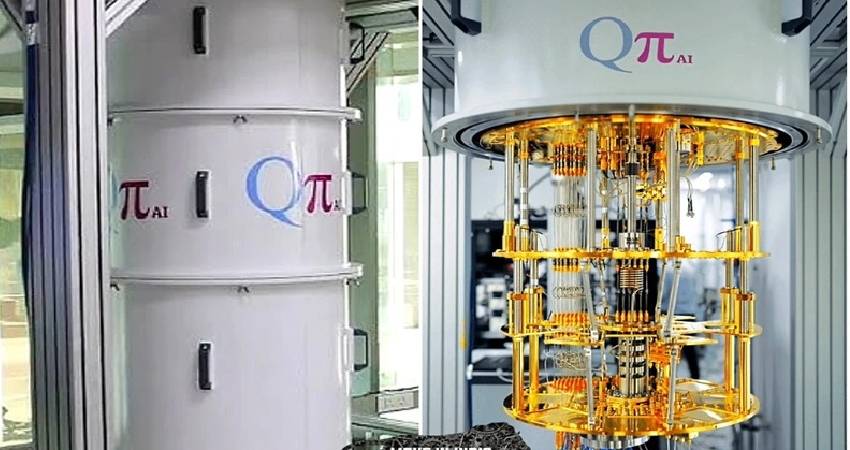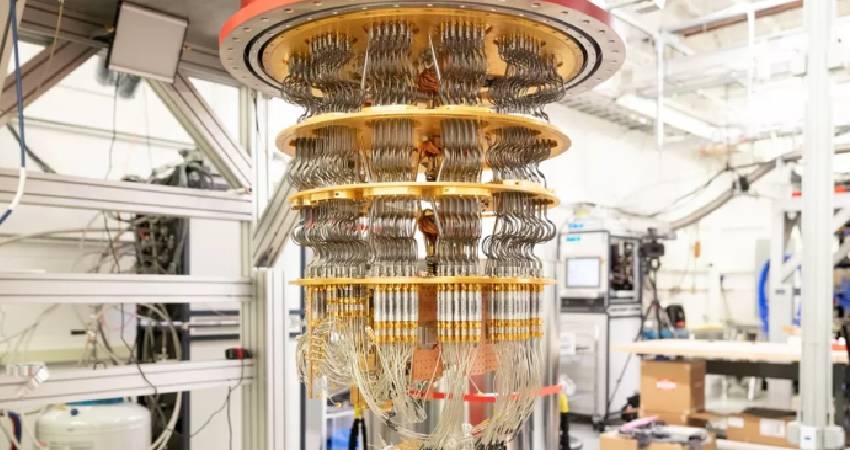Quantum computing is no longer mere science fiction. Around the globe, governments, tech giants, and research institutions are racing to harness the promise of exponentially powerful computing. In India, the debate is especially poignant: is this a distant dream or a near-future reality?
Why Quantum Computing Matters: Beyond Classical Limits
The computational frontier: What classical struggles with
Despite decades of progress in classical computing, many problems remain intractable: optimization across astronomical state spaces, factoring large numbers, simulating quantum many-body systems, solving complex logistics or supply chains, and cryptanalysis. These problems scale poorly with classical bits.
In contrast, quantum computers exploit superposition, entanglement, and interference to tackle specific classes of problems more efficiently— promising exponential speedups (or at least polynomial gains in many cases).
Transformative applications with national significance
- Cryptography & security: Many encryption schemes (e.g., RSA, ECC) rely on hardness of factoring or discrete logarithms. Quantum algorithms like Shor’s can break these, pushing the need for post-quantum cryptography and quantum-safe infrastructure.
- Drug discovery & materials science: Simulating molecular behavior and quantum chemistry is extremely challenging classically; quantum hardware could model new molecules better.
- Optimization & logistics: Industries like supply chains, energy grids, traffic routing, finance, and agriculture benefit from solving large optimization problems faster.
- Sensing & metrology: Quantum sensors can enhance precision in fields like navigation, geophysics, medical imaging, and gravitational wave detection.
- Quantum communication & secure networks: Quantum key distribution (QKD), quantum satellites, and networked quantum systems promise ultra-secure communications.
Thus, quantum computing isn’t just a “cool tech” but a potential backbone for national-critical infrastructure, defense, startups, and industrial competitiveness.
The urgency for India: Why national development and sovereignty hinge on quantum readiness
- Digital India, Smart Cities, Aadhaar-scale services, banking, online governance—all depend heavily on secure cryptography and robust infrastructure.
- If quantum-capable adversaries emerge, India’s digital sovereignty could be challenged.
- Global standards, trade, technology export/import, and patent landscapes will increasingly hinge on quantum capabilities.
- For India to remain competitive in global science & technology diplomacy, it must not play catch-up forever.
In short, quantum computing is not speculative for India—it is part of national affairs and future-proofing.

The Physics Behind the Promise (in Plain Language)
Before diving into policies and projects, let’s demystify the basics. You don’t need a PhD in physics—just intuition.
Classical bits vs quantum qubits
- A classical bit is either 0 or 1.
- A quantum bit, or qubit, can be in a superposition: both (a|0⟩ + b|1⟩) simultaneously.
- When measured, it collapses to either 0 or 1 with probabilities depending on amplitudes a, b.
Entanglement & interference
- Entanglement: Qubits can correlate in such a way that the state of one instantly influences another, no matter distance.
- Interference: Quantum amplitudes can add or cancel, enabling algorithms to reinforce correct answers and cancel wrong paths.
Quantum gates, circuits & algorithms
- Like classical logic gates (AND, OR), quantum gates (Hadamard, Pauli-X, CNOT, phase gates) manipulate qubits.
- Circuits are sequences of gates, culminating in measurement.
- Quantum algorithms like Shor’s (for factoring), Grover’s (search), QPE (phase estimation), and variational algorithms (VQE, QAOA) are mainstays.
Noisy intermediate-scale quantum (NISQ) era
We are currently in the NISQ era: quantum processors with tens to a few hundreds of noisy qubits—not error-corrected. These systems may offer quantum advantage (practical speedups) for niche tasks before full fault tolerance arrives.
Error correction & fault tolerance
To scale to large, reliable quantum computers, error-correcting codes (e.g. surface codes) are essential. They require overhead: many physical qubits per logical qubit.
Platforms & implementation techniques
Quantum hardware comes in different flavors:
- Superconducting circuits (IBM, Google style)
- Trapped ions or atoms
- Photonic systems
- Topological qubits (still experimental)
- Spin qubits, defects (e.g., NV centers)
- Hybrid systems combining classical + quantum layers
The choice of platform affects scalability, error rates, cryogenics, control electronics, etc.
India’s Early Quantum Steps: From QuEST to First Trials
Quantum computing in India didn’t begin in 2023—there’s a backstory.
QuEST (Quantum-Enabled Science & Technology) program, 2018
In 2018, the government launched QuEST, a foundational measure to support quantum research—internal projects in photonics, superconducting qubits, quantum optics, and cryptography.
This seeded early capacity, train researchers, and allowed scattered proof-of-concept work.
Quantum communication experiments via satellite
India isn’t new to quantum communication: ISRO and partners conducted Quantum Experiments using Satellite Technology (QuEST), demonstrating entanglement-based quantum communication over 50 m and 300 m free space links.
These trials signal that India already has domain competence in quantum optics and secure links, which are the building blocks for quantum networks.
Academic and institutional research
Institutes like TIFR, IISc, IITs, Indian Institutes of Science Education and Research (IISER), CSIR labs, and national labs have long had groups doing quantum optics, quantum information theory, quantum materials, and condensed matter physics. These provide talent pipelines.
Early partnerships & incubation
Some Indian labs partnered with global players (IBM, Xanadu, D-Wave, etc.) for cloud quantum access, algorithm prototyping, and faculty/student exchange. These collaborations helped Indian researchers stay current with global progress.
Yet until 2023, India lacked a bold, centralized push to unify and scale quantum efforts. That changed with the National Quantum Mission.
Enter the National Quantum Mission: A Policy Leap
What is the National Quantum Mission (NQM)?
On 19 April 2023, the Union Cabinet approved the National Quantum Mission (NQM) with an outlay of INR 6,003.65 crore (2023–24 to 2030–31).
The mission aims to seed, nurture, and scale scientific and industrial R&D to build a vibrant and innovative ecosystem in Quantum Technologies & Applications (QTA).

Its objectives include:
- Developing intermediate-scale quantum computers with 50 to 1000 physical qubits across multiple platforms within the 8-year span.
- Building satellite-based quantum secure communication between ground stations (within India and with other countries), and inter-city QKD over 2000 km.
- Creating multi-node quantum networks with quantum memories.
- Developing quantum devices: magnetometers, atomic clocks, single-photon sources/detectors, entangled photon sources, novel quantum materials (superconductors, topological materials).
- Establishing Thematic Hubs (T-Hubs) and technical groups to focus research, innovation, and translation.
Why NQM matters for national development & Indian government policy
- It aligns with Digital India, Make in India, Skill India, Start-up India, and the Sustainable Development Goals (SDGs).
- It is part of India’s push for technological self-reliance and strategic sovereignty in emerging technologies.
- The government explicitly positions NQM as more than “science funding”—as a strategic imperative with spillover into industry, security, and economic infrastructure.
- As per the Press Information Bureau (PIB), NQM is a “strategic step toward securing India’s future in the quantum era.”
Institutional setup: T-Hubs and governance
- In October 2024, four T-Hubs were announced, located at premier institutions:
• IISc, Bengaluru
• IIT Madras / C-DOT, Delhi
• IIT Bombay
• IIT Delhi
These hubs are focused on discrete verticals: quantum computing, quantum communication, quantum sensing/metrology, and quantum materials & devices. - There are 14 technical groups (TGs) under these T-Hubs, each covering specialized tasks.
- Governance is overseen by the Mission Governing Board, chaired by industry veteran Ajai Chowdhry, with oversight from the Principal Scientific Adviser (PSA).
- The DST is the nodal department for implementation.

Early invites for startups & proposals
- In July 2025, DST opened a rolling call for quantum startups across the four verticals: computing, communication, sensing, and materials/devices.
- Eight startups were selected as NQM-aligned participants, each receiving initial funding support (up to ~USD 3.5 million).
- A key objective is fostering public–private partnerships, joint labs, industry adoption, and translation of quantum research to applications.
Progress & ambitions
- In April 2025, QpiAI, a Bengaluru startup, unveiled QpiAI-Indus, India’s first full-stack 25-qubit superconducting quantum computer under NQM.
- The machine integrates hardware, control electronics, cryogenics, and quantum-classical software (Quantum-HPC, AI-enhanced optimization).
- That milestone is often cited as India’s most powerful quantum computer so far.
- The mission goal is to cross the threshold of 50–1000 qubit systems in the next few years and establish quantum networks.
Thus, the National Quantum Mission seeks to transform quantum from niche labs to national infrastructure.
The Quantum Ecosystem: Hubs, Startups, Academia & Industry
For India’s quantum dream to be real, a vibrant ecosystem of talent, industry, and infrastructure must flourish. Let’s map the current landscape.
Academic backbone & talent pipelines
- Leading institutions — IISc, IITs, IISERs, TIFR, and CSIR labs — already house quantum, optics, material science, and condensed-matter research groups.
- PhD and postdoctoral programs in quantum information, quantum optics, quantum materials are emerging in these institutions.
- Some universities now include quantum computing courses at the undergraduate and master’s levels, often in collaboration with industry or national labs.
- Efforts like the Quantum Computing Applications Lab (Ministry of Electronics & IT + AWS) provide cloud access and training to students/ researchers in India.
- The “Jai Anushandhan” vision (research-first) encourages academic research translation aligning with national missions like NQM.
Startup & private sector engagement
- QpiAI is the most visible success story, building 25-qubit hardware under NQM.
- The government co-led QpiAI’s Series A round, contributing to a USD 32 million funding round.
- Around eight startups are formally selected to deliver NQM goals, each working in diverse verticals (computing, communication, sensing, materials).
- Global partnerships are being forged: IBM, TCS, and others are expected participants in state-level quantum hubs (e.g. Quantum Valley in Amaravati).
- The private sector can contribute in quantum software, algorithm development, cloud integration, cryo-electronics, control systems, and downstream industry use cases.
Infrastructure, labs & the T-Hubs
- The T-Hubs, with technical groups, act as nodes for research, development, and translation. They will host labs, clean rooms, fabrication, cryogenics, photonic test beds, and interdisciplinary collaborations.
- Funding is allocated for infrastructural development, experimental systems, and inter-lab connectedness.
- National-level quantum networks (for QKD, distributed quantum computing) will require ground stations, fiber-based quantum links, and satellite coordination.
- India also plans to integrate quantum communications on satellites (leveraging ISRO and defense capabilities) to enable long-distance secure links.
Use-case orientation & industry adoption
- A conscious shift is being made: research must translate into industry adoption (finance, logistics, pharma, materials).
- Startups and labs are encouraged to propose proof-of-concept applications under NQM funding.
- Hybrid classical-quantum systems, cloud quantum services, algorithm libraries, and middleware are essential bridges.
- International collaborations (e.g., UK-India technology security initiative) may open pathways for co-development.
Ecosystem gaps & nascent elements
- Cryogenic infrastructure, superconducting fabrication, clean rooms, low-noise electronics are expensive and require scale.
- Few companies in India currently manufacture superconducting qubits, cryo control systems, or quantum-grade electronics— dependency on imports remains.
- Skilled engineers in quantum control, calibration, error correction, microwave engineering, photonics are in short supply.
- A culture of translation and commercialization in academia is still evolving.
Case Study: QpiAI and India’s First 25-Qubit Machine
One of the most concrete proof-points of India’s quantum progress is QpiAI-Indus, the 25-qubit full-stack quantum computer developed in Bengaluru. Let’s dive into its story and implications.
The genesis of QpiAI
- QpiAI is one of eight startups selected under NQM’s early stages.
- In April 2025, coinciding with World Quantum Day (14 April), QpiAI announced QpiAI-Indus, India’s first full-stack 25-qubit superconducting quantum system.
- The system integrates hardware, cryogenics, control electronics, quantum-classical software stack (Quantum-HPC, AI-driven optimization).
Technical significance
- While 25 qubits is modest by global standards, it marks a critical juncture: India now operates its own quantum system for experimentation and benchmarking.
- The team has filed ~11 patent applications so far.
- QpiAI claims to combine optimized software, AI enhancements, and hardware stack—moving beyond mere “imported hardware” to a more integrated system.
Strategic and symbolic value
- The machine demonstrates proof-of-concept domestically, reducing reliance on foreign quantum systems for benchmarking.
- It is seen as a key first deliverable under NQM, signalling that India can build and operate quantum machines domestically.
- QpiAI secured government co-funding in a $32 million round, linking startup growth with national mission objectives.
- The narrative around this milestone helps galvanize public interest, university initiatives, and investor confidence.
Limitations & context
- The 25 qubits are not error-corrected; they are noisy intermediate-scale (NISQ). Their utility for large-scale, real-world advantage is limited.
- India is still distant from fault-tolerant machines, which may require thousands of physical qubits for each logical qubit.
- Calibration, coherence times, gate fidelity, connectivity, and error correction are all areas needing further improvement.
- Nonetheless, as a stepping stone, it’s a crucial, tangible achievement aligning with mission goals.
State Initiatives: Quantum Valley, Q-City Bengaluru & Karnataka Plan
While national policy is essential, many quantum innovations will emerge at the state and city level. Let’s examine a few pioneering efforts in India.
Amaravati Quantum Valley, Andhra Pradesh
- The Andhra Pradesh government plans a Quantum Valley in Amaravati, allied with NQM goals and seeking global partnerships.
- This hub is envisaged as a DeepTech research park with capabilities in quantum, AI, cybersecurity, and allied R&D.
- Collaborators may include IIT Madras, TCS, IBM, and industry partners.
- As per news, 50 acres of land have already been allocated to the IT project supporting Quantum Valley.
- The goal: by 2030, quantum exports of ₹5,000 crore, deployment of ~3,000 qubits, and installation of multiple quantum computers.
Bengaluru’s Q-City (Quantum City)
- The Karnataka government has sanctioned 6.2 acres in Hesarghatta, Bengaluru, for a Quantum City (Q-City) to become a global quantum hub.
- Q-City will host labs, startups, incubation, hardware manufacturing and build linkages with universities.
- In parallel, Karnataka launched a ₹1,000 crore Quantum Mission and VC fund to support the state’s quantum economy ambitions.
- The initiative aligns with Karnataka’s goal of building a $20 billion quantum economy by 2035.
Comparing state-level initiatives — synergy & risk
- State governments, by competing and collaborating, can foster local talent clusters, industrial linkages, and innovation hubs.
- Risks include duplication, misalignment with national goals, over-investment in infrastructure without adequate research pipelines, or weak governance.
- If well aligned, these hubs can act as “spokes” of national quantum strategy, feeding into T-Hub networks and startup pipelines.
These state-level leaps complement the central NQM, making India’s quantum future a multi-scalar cooperative mission.

Global Context: Where India Stands in the Quantum Race
To assess whether quantum computing in India is a dream or near future, we must compare India’s pace, strengths, and gaps with global leadership.
Major quantum programs globally
- USA: The National Quantum Initiative Act (2018) invests billions in quantum research, workforce, and commercialization.
- EU / Horizon Europe: Collaborative quantum programs, pan-European research pipelines.
- China: Heavy investment, domestic supply chains, satellite quantum communication breakthroughs.
- UK, Germany, Canada, Australia: Active national programs, strong startups in quantum cryptography, sensors, and computing.
- Many of these nations set up quantum national institutes or national labs with long-term funding.
Benchmarking India’s strength
Strengths:
- Solid base in theoretical physics, mathematics, and material science via Indian academia.
- Government’s willingness to commit ₹6,000+ crore is courageous and foundational.
- Young demographic with engineering and science interest — potential quantum talent pool.
- Growing startup ecosystem; experience in scaling tech ventures (e.g. IT, AI).
- Partnerships: India–UK technology security initiative includes quantum cooperation.
Challenges / weaknesses:
- Late start: many countries already have more advanced quantum hardware and infrastructure.
- Absence of robust domestic supply chain for quantum-grade hardware (superconducting circuits, cryo controllers, specialized optics).
- “Valley of death” risk: converting lab-level science to scalable products.
- Brain drain: quantum researchers may move to abroad labs for resources.
- Global competition is fierce; to be relevant, India must excel in niche verticals or integration capability.
Unique competitive niches for India
India may not beat global giants in every niche—but can focus strategically:
- Quantum software, algorithms, compilers, simulation tools (less hardware-intensive)
- Hybrid quantum-classical systems and middleware
- Quantum cybersecurity and post-quantum cryptography
- Quantum sensors & metrology for climate, agriculture, health
- Quantum networking and satellite integration, leveraging ISRO and space capability
- Geopolitical partnerships: India can become a hub for quantum in South Asia, Africa, or neighboring regions
Timing & “window of opportunity”
Quantum hardware is still nascent globally. India’s rapid push via NQM ensures it is not left behind. If India can deliver reliable intermediate-scale quantum systems within 5–8 years, it can claim leadership in many applied areas.
Thus, while India is behind in hardware scale, it is ahead in ambition—and that matters.
Barriers, Risks & Skepticism: Why Dream More Than Reality?
Quantum computing is hard. Many obstacles must be acknowledged before declaring it near-future reality.
Technical and engineering hurdles
- Error rates & decoherence: Qubits are fragile. Noise, thermal fluctuations, control errors challenge scalability.
- Error correction overhead: Fault-tolerant computing demands huge overhead—hundreds to thousands of physical qubits per logical qubit.
- Scalability & connectivity: Building reliable interconnections, coherence across nodes, and control electronics at scale is daunting.
- Cryogenics & infrastructure cost: Low-temperature systems (millikelvin) require sophisticated dilution refrigerators and control systems.
- Calibration, cross-talk, drift: Maintaining calibration over time is non-trivial.
- Materials and fabrication: Superconducting qubit manufacturing, defect control, and reproducibility are still difficult.
Ecosystem, policy & institutional challenges
- Talent scarcity: Experts in quantum engineering, control theory, cryogenics, microwave electronics, quantum error correction are few.
- Translational gap: Converting research into market-ready systems or industrial deployment is notoriously hard.
- Funding timelines: Quantum projects often have long horizon; sustaining funding over decades is risky.
- Regulation & standards: As quantum develops, standards for interoperability, safety, security must evolve.
- Global alignment: India must navigate IP rights, export controls (some quantum tech is dual-use), and international competition.
- Adoption inertia: Industries will hesitate to adopt quantum-based solutions until proven value exceeds risk.
Vision vs hype: tempered expectations
- Quantum advantage is real but likely specialized—not universal.
- Many consumer use cases are decades away; the short- to mid-term gains will be mostly in niche applications, cryptography, simulation, optimization.
- Some grand promises in media may overstate timelines; academia and industry must temper expectations.
- National expectations must be managed to avoid disappointment or backlash if milestones are delayed.
Despite these, the investment and momentum make it more near-future than fantasy—if managed well.
Strategic Roadmap: From Policy to Practice
To convert India’s quantum dream into a near-future reality, a strategic roadmap is essential. Below is a phased plan with key pillars.
Phase I (2023–2025): Establish foundations
- Execute initial T-Hub deployments, technical groups, and labs.
- Fund early-stage quantum startups and research grants through the rolling call.
- Create quantum testbeds and benchmarking platforms accessible to academia and industry.
- Build quantum curriculum modules, certificate/diploma courses, and promote interdisciplinary education (physics + CS + electronics).
- Strengthen collaborations with international quantum labs and institutions to exchange talent, share infrastructure, and co-develop benchmarks.
- Ensure alignment with quantum-safe cryptography standards and preemptive migration of critical infrastructure.
- Initiate pilot quantum communication links (short-range fiber-based QKD, satellite-ground nodes).
Phase II (2026–2028): Scale & translation
- Deliver intermediate-scale quantum systems (50–200 qubits) under NQM targets.
- Accelerate translation: funded demonstrators in industry sectors (pharma, logistics, finance, energy).
- Expand T-Hub capacities, integrate state-level quantum hubs (Amaravati, Q-City) with national networks.
- Push quantum communication networks across cities, satellite links, and national secure backbone.
- Establish quantum foundries in India for cryo-electronics, superconducting fabrication, and photonic components.
- Strengthen IP regimes, industrial policy, export controls, and standards for quantum components.
- Support startups in scaling—investment, incubation, business development.
Phase III (2029–2031): Leadership & global integration
- Achieve machines with >500 qubits and initial error-corrected logical qubits.
- Deploy a quantum backbone network with multi-node connectivity and quantum memory.
- India becomes exporter of quantum hardware, software, and solutions (e.g., quantum-as-a-service).
- Integrate quantum systems into national critical infrastructure (power grid optimization, climate modeling, materials design).
- Assume leadership roles in global quantum consortia and standards bodies.
- Achieve measurable GDP spillovers via quantum-enabled industries and services.
Cross-cutting enablers & risk mitigation
- Talent development: Create fellowships, chairs, scholarship programs, industry internships.
- Funding continuity: Lock multi-year budget support; incentivize private co-investment.
- International partnerships: Technology exchange, joint labs, co-funding with like-minded nations.
- Standards & regulation: Work with global bodies on quantum interoperability, safety, and export controls.
- Monitoring & evaluation: Use key performance indicators (qubit counts, algorithm performance, startup metrics, industry adoption).
- Public engagement: Outreach to schools, media, citizen science to grow awareness and support.
If followed systematically, India can leap from aspirational to operational quantum power by 2031.
What Students, Professionals & Policy Makers Should Do
Quantum computing is not just for physicists. Here’s guidance for different stakeholders to adapt and contribute.
For students & early-career researchers
- Build strong fundamentals
- Study quantum mechanics, linear algebra, probability, algorithms, and computer science.
- Take interdisciplinary courses (e.g. quantum programming, control theory, microwave electronics).
- Participate in quantum hackathons, challenges, open-source projects
- Platforms like IBM Quantum, Rigetti, Azure Quantum offer free access to qubit systems and simulators.
- Contribute to quantum software libraries, simulators, or algorithmic research.
- Pursue internships & research with T-Hubs, labs, or startups
- Seek opportunities in labs funded under NQM or quantum research groups in universities.
- Apply for funded fellowships, quantum research grants inside India and abroad.
- Learn quantum programming frameworks
- Qiskit, Cirq, PennyLane, Q# and other quantum SDKs
- Understand variational algorithms, hybrid-classical architectures, and benchmarking approaches.
- Aim for translation
- Think not just theory but how quantum solutions may integrate with industry problems (pharma, materials, finance).
- Start small—adapt toy problems that industry can test in time.
For professionals & industry leaders
- Stay informed & upskill
- Provide teams training in quantum basics, algorithm thinking, and near-term hybrid approaches.
- Sponsor quantum skilling programs or partner with academic labs.
- Begin experimentation with quantum services
- Use cloud-access quantum platforms to prototype proof-of-concept use cases.
- Match internal use-cases (optimization, cryptography, materials) with nascent quantum methods.
- Partner with startups and labs
- Co-develop quantum-enhanced products, sponsor projects, or act as early adopters.
- Participate in public funding calls under NQM to propose viable use cases.
- Invest strategically
- Venture capital or corporate R&D funds can invest in quantum startups or infrastructure.
- Demand consistency in government policy and stability to reduce investment risk.
- Advocate policy and standards
- Industry bodies (CII, NASSCOM, Bharat, etc.) should engage with government to shape quantum-relevant regulation, funding, and IP frameworks.
For policy makers & government
- Ensure sustained funding & bipartisan support
- Multi-year financial commitments to NQM, even across electoral cycles
- Encourage state-level contributions, matching grants, and co-investment incentives
- Facilitate infrastructure creation
- Incentivize quantum foundries, clean-room facilities, cryo-electronics supply chain through PPP models
- Provide tax incentives, grants, or special economic zones for quantum hardware manufacturing
- Promote quantum security transitions
- Mandate migration of critical infrastructure to post-quantum cryptography
- Implement pilot programs in government systems (e-governance, banking, defense)
- Set standards, regulation & export policy
- Collaborate internationally to avoid export restrictions hurting domestic quantum growth
- Participate in global quantum standardization bodies
- Facilitate human capital ecosystem
- Launch quantum fellowship, chair, and scholarship schemes
- Encourage cross-disciplinary programs in universities
- Foster public–private synergies
- Match industry proposals, co-fund translational projects, and support startup incubators
- Encourage state-level quantum hubs that align with national mission
- Ensure monitoring and flexibility
- Quarterly/annual progress reviews, course corrections
- Transparent reporting of milestones vs goals
By working in synergy, students, industry, and government can turn quantum from aspiration to national strength.
Actionable Takeaways
Dream or near future? — A balanced verdict
Quantum computing in India is not purely a dream, nor is it entirely delivered yet. It is a near-future possibility, contingent on persistent policy, infrastructure investment, talent development, and ecosystem alignment.
The National Quantum Mission, with ₹6,003.65 crore backing, marks a decisive inflection—a deliberate pivot from scattered research to mission-mode execution. The unveiling of QpiAI-Indus (25 qubits) is a key milestone proving domestic capability. But technical, institutional, and translation challenges remain.
India’s strengths in science, governance ambition, demographics, and a maturing startup ecosystem provide fertile ground. If execution aligns with vision, India could emerge as a strategic quantum leader by 2030–31.









